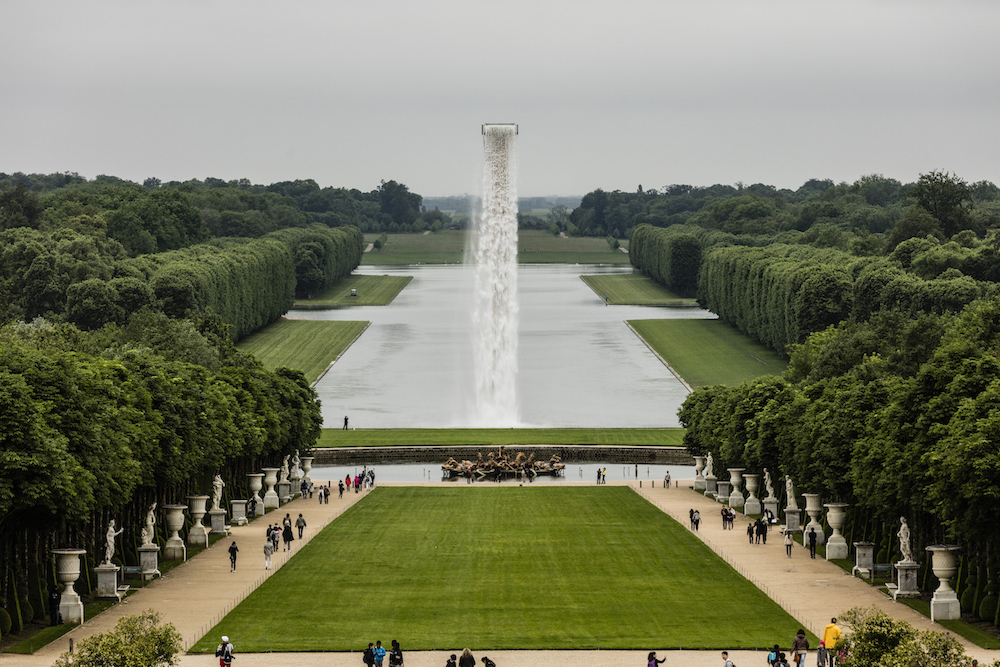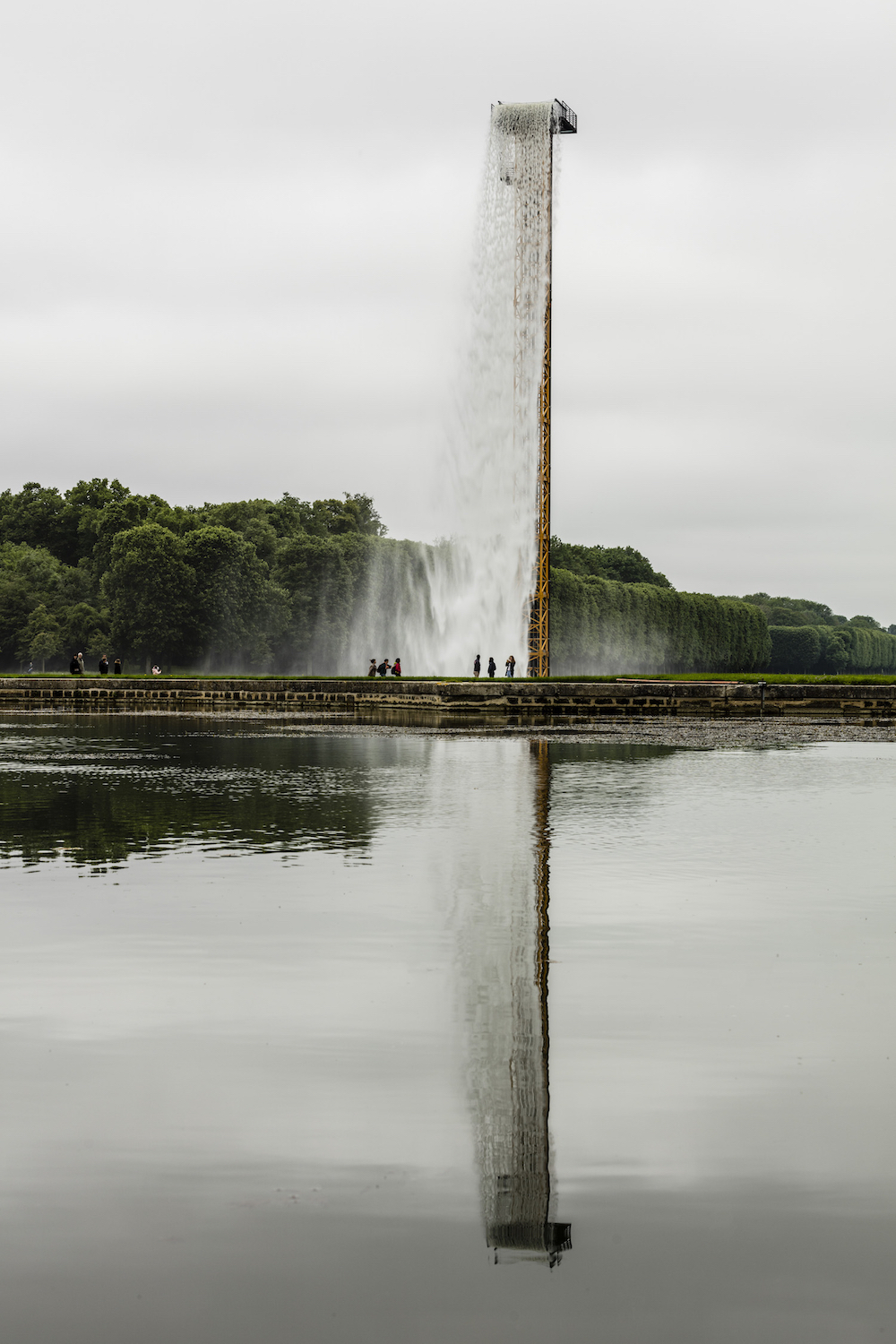Meeting of artist and site
This summer I had the chance to experience Olafur in Versailles. This experience turned into a game of tracing Olafur in the 18th century giant by his significant gestures.
Today, however, we look at Versailles differently, and when I visit the site, I ask myself: how do you, the visitor, view this iconic site? What does it do to you? Have we all become king?
Fotoğraf: Anders Sune Berg Glacial rock flour garden, Palace of Versailles.
Olafur Eliasson’s mind is in perpetual motion, but he is sparing with his words and gestures. His ideas are abundant and ever-changing, his actions precise, measured. He strode around the grounds of Versailles, nding inspiration here, only to abandon the idea, imagining a work there, later deciding the spot was not entirely suitable. He returned several times before deciding on the places that would hold his attention in the long term, stopping to examine a detail on a sculpture in a forgotten corner of a drawing room. He even wanted to wander alone at night through the château, experiencing emotions and impressions which in themselves form a unique relationship with the inexhaustible mysteries of the Versailles estate.
Waterfall, Photo credit: Anders Sune Berg
Versailles is simultaneously a historical site with tremendous patrimonial value and a microcosm where people of diverse origins and cultures brie y cross paths. A museum and public space, it cannot help but whet the appetite of an artist whose particular interest is in seeking out both natural spaces and those forged by cultural history, upon which he also bestows a social role. At Versailles these two elements are intermingled, with the concept of a garden based on a geometric design and lines of perspective; and the powerful architecture that pays testament to the glory of the monarchs who brought this château into being.
Fog Assembly / Photo Credit: Anders Sune Berg
The Gaze of Versailles / Photo Credit: Anders Sune Berg





